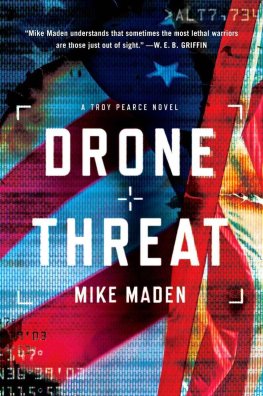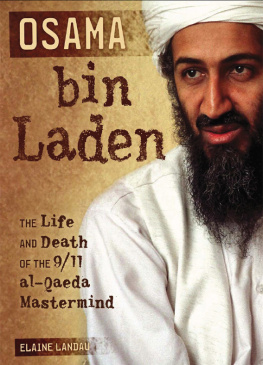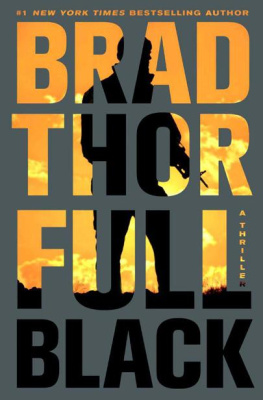This book is a work of fiction. Names, characters, places and incidents are products of the authors imagination or are used fictitiously. Any resemblance to actual events or locales or persons, living or dead, is entirely coincidental.
All rights reserved, including the right to reproduce this book or portions thereof in any form whatsoever. For information address Pocket Books, 1230 Avenue of the Americas, New York, NY 10020
POCKET STAR BOOKS and colophon are registered trademarks of Simon & Schuster, Inc.
Prologue
The two men sat just below a remote ridgeline in the Nyambene Hills, well concealed from anyone moving along the shallow valley below them. They had been there for the better part of two days. Behind them in a small clearing in the lush vegetation, they had made dry campjust the bare necessities. If needed, they could be packed out and on the move in a matter of minutes. One or the other of them was always on watch, keeping the valley and the trail that wound through the drainage, under constant surveillance. But earlier that morning, they saw the file of men making their way over a rise to the north of their position. Now it would be a matter of time. They would soon be making their way down the sloping drainage, and events would take their course. This was the main route into the Kora National Reserve and one favored by those who came for the animals and the ivory. Sometimes, they came for more than animals and ivory. It was in the Kora that poachers had murdered park warden George Adamson, as they did his wife, Joy Adamson, in the nearby Meru National Park. The two Adamsons, Elsa the lioness, Pippa the cheetah, and all the others from their book Born Free were now gone. But the poachers still came.
While the two watched the valley floor, their Ndrobo tracker sat on his haunches back in the shade near the clearing. He would be there for the kill, but for now his work was done. Days earlier, he had ranged out to find the men. His experience and knowledge of the game trails had rightly predicted that this band of travelers would be coming this way. He swatted flies with a lion-hair quirt and dozed in the growing warmth.
The two on watch were very different, both in appearance and mind-set. One was a tall Turkana with ebony skin and a noble bearinga powerfully built man with wide, useful shoulders and long muscles. Yet it was his features that defined the man; it was as if they were chiseled from black granite. He surveyed the area impassively, occasionally bringing a pair of Zeiss binoculars to his face to scan the terrain before them. The second man was smaller and more finely constructed, with an angular, aquiline countenance and nut-brown skin. He was Somali, and his eyes were ferretlike, as were his manner and movementssomeone seemingly more suited to a bazaar than the bush. The tall Turkana was aware of everythingthe wind, swampland at the foot of the valley, the pack of hyenas just beyond the edge of the swamp, the angle of the sun, the relationship of their position on the ridge to the terrain below. He missed nothing. The Somali watched only the trail that snaked into the valley. His was the patience of a bird of prey. Then they appeared.
There were twelve of them, and they moved in good order. They were tall and covered ground quickly with long, easy strides. Each carried an AK-47 assault rifle and a light pack. These were hard men, Sudanese, who could cover thirty miles a day or more on very little food or water. But in the Kora, in the shadow of Mount Kenya, water was never a problem. Since the lifting of the total ban on the sale of African ivory, a new and lucrative trade had sprung up, attracting poachers like these from the Sudan and as far away as the Congo and the Central African Republic. The shooting of elephants was banned in Kenya, but now illegal ivory could be passed off as that from sanctioned shootings. The Kenya elephant herd had stabilized at some estimated thirty thousand animals, but that number was now threatened with the resumption of trade in tusks. African poverty and men with automatic weapons again threatened the great herds, in Kenya and all over southern Africa. The bands of poachers, who were basically paramilitary units, now came south to kill elephants. And the park rangers charged with the protection of the great herds were, man for man, simply no match for these armed bands. The three men who waited carried papers that identified them as employees of the Kenyan National Park Service, but their charter and their duties were quite different from normal park ranger work.
As the Turkana saw the file of men keep to the game trail that would bring them past their position, he turned to his companion.
You will stay here, he said in Masai, a language both men understood, while I take on the head of the column. Let us do this quickly. Awusipe namhla isinkwa. With that he filtered into the bush in a direction that would take him well in front of the advancing file of men. The Somali smiled and checked his weapon, a Belgian-made FAL automatic rifle. He settled into a comfortable prone shooting position and laid out two additional twenty-round magazines, far more rounds than he felt he would need. There was an audible click as he took the weapon off safe. The sound seemed to bring the Ndrobo from his dozing. He took up his AK-47 and found a shooting perch some fifteen yards down the ridgeline. This brought a scowl from the Somali. He knew the scout was not as good a shot as himself, yet he might just get one or two that might otherwise be left for him.
The Turkana got to his shooting position to the side of the trail, well ahead of the advancing column of men. He too had an FAL, and his extra magazines were in snap pouches on his vest. He knelt behind a fallen and decayed acacia tree that provided more concealment than cover. Five minutes later the first man in the Sudanese file appeared; he was perhaps a hundred yards away. The Turkana remained still as a statue and let the file approach the site they had selected for the ambush, where the trail cut through a short stand of grass. There was no place to hide, and any concealing vegetation was a fifty-yard run back up the trail. The leader carried his Kalishnakov at the ready, but the others had their rifles slung or draped across their shoulders, clutching them by the barrel. When he judged the file was in the most exposed position, the Turkana stood and in a single fluid motion shouldered his rifle. His first round center-punched the lead man in the file. He dropped as if he were poleaxed, dead before he hit the ground. A fraction of a second later, the second in the file took a big 7.62 round in the chest, just as the head of the last man in the file exploded from a well-aimed round from the Somalis rifle. The Turkana walked forward, taking each in turn, while his shooting partner on the ridge worked the column back to front. The little Ndrobo tracker blazed away at the center of the column on full-automatic fire, hitting no one.










